As an Amazon Associate, I earn from qualifying purchases. In addition, I participate in several other affiliate programs that allow me to earn while I recommend products I love.
There’s nothing quite like the aroma of a freshly baked cake, ready to be adorned with delicious frosting.
However, before you dive into the frosting process, it’s important to let the cake cool properly.
In this guide, we’ll talk about how long to cool a cake before frosting so you’ll get great results without all the mess, as well as answer the question, “how long should a cake cool before frosting?”.
Seriously, don’t try and frost a cake before it has cooled properly, because you’ll be in real trouble and will tear it apart!
Speaking from experience here, ya’ll.
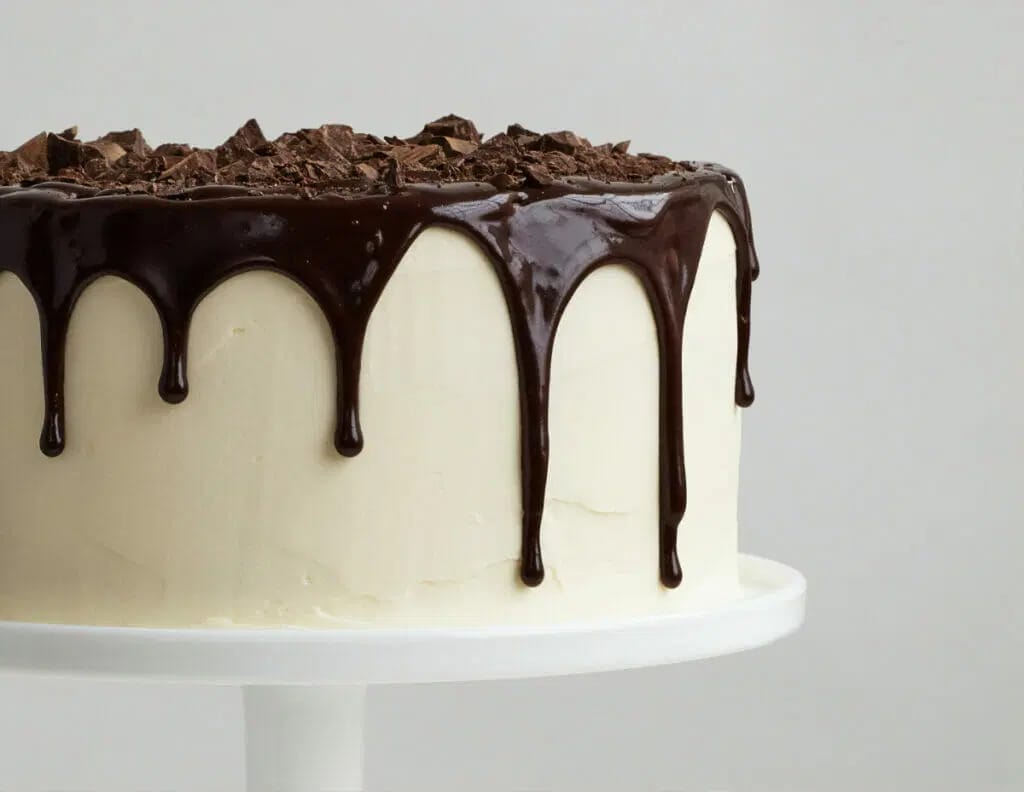
Why is Cake Cooling Important Before Frosting?
Cake cooling before frosting is crucial for a few important reasons:
Maintaining the Structural Integrity of the Cake
Allowing the cake to cool properly ensures that it sets and firms up, providing a stable foundation for the frosting.
A warm cake can cause the frosting to melt, slide off, or create a messy appearance.
Allowing Flavors to Develop
As the cake cools, the flavors have a chance to develop and meld together.
Frosting a warm cake can trap steam and prevent the flavors from fully developing, affecting the taste of the final product.
Preventing Frosting Issues
Frosting requires a stable surface to adhere to.
If the cake is too warm, the frosting can soften or melt, resulting in an uneven or unstable finish.

Cooling Time Recommendations for Different Cake Types
The recommended cooling times for different cake types are as follows.
| Cake Type | Cooling Time |
|---|---|
| Standard Cakes | 1 to 2 hours |
| Larger or Taller Cakes | 2 to 3 hours |
| Sponge or Chiffon Cakes | 30 minutes to 1 hour |
| Dense or Heavy Cakes | 2 to 3 hours or overnight |
Butter-based Cakes
Standard Cakes: Allow the cake to cool for 1 to 2 hours before applying frosting.
Larger or Taller Cakes: Give the cake 2 to 3 hours of cooling time to ensure the interior sets properly.
Sponge or Chiffon Cakes
These lighter and more delicate cakes require a shorter cooling time of 30 minutes to 1 hour before frosting.
Dense or Heavy Cakes
Cakes with a denser texture, such as pound cakes or fruitcakes, benefit from a longer cooling time.
Aim for 2 to 3 hours or even overnight to ensure thorough cooling.
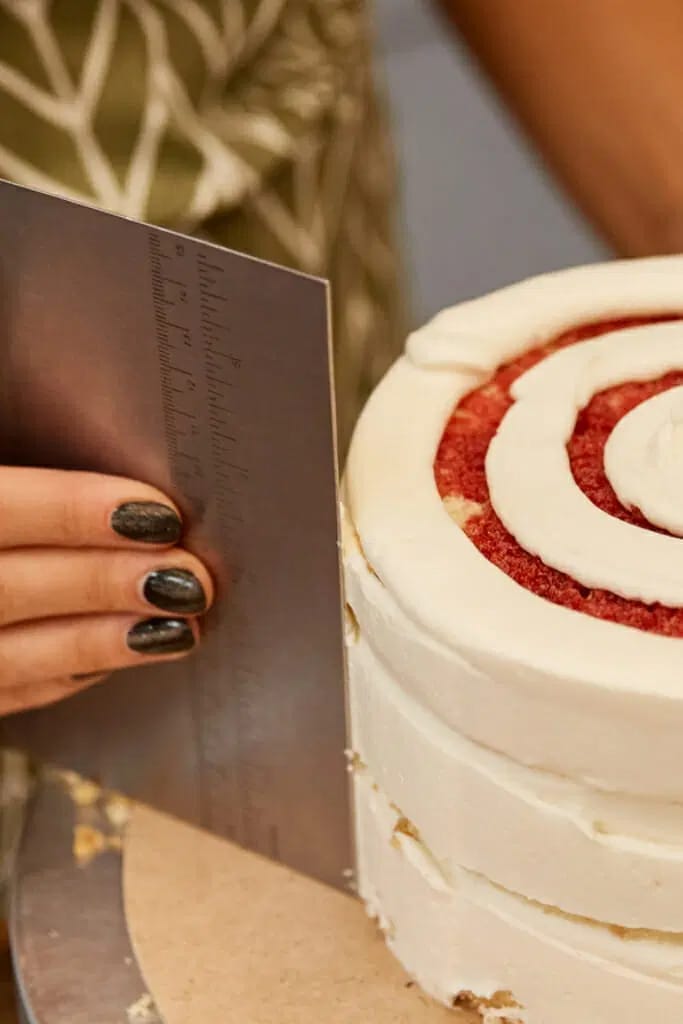
Factors Affecting Cake Cooling Time
Several factors can influence the time it takes for a cake to cool.
Pan Material and Size
Dark-colored pans retain more heat and may require longer cooling times than light-colored ones.
Additionally, larger or thicker cakes will take longer to cool compared to smaller ones.
Ambient Temperature and Humidity
Warm environments or high humidity levels can slow down the cooling process.
Cooling Methods
Cooling the cake on a wire rack allows air to circulate around it, promoting even cooling.
Alternatively, placing the cake in the refrigerator can expedite the cooling process.
Signs That Indicate the Cake is Ready for Frosting
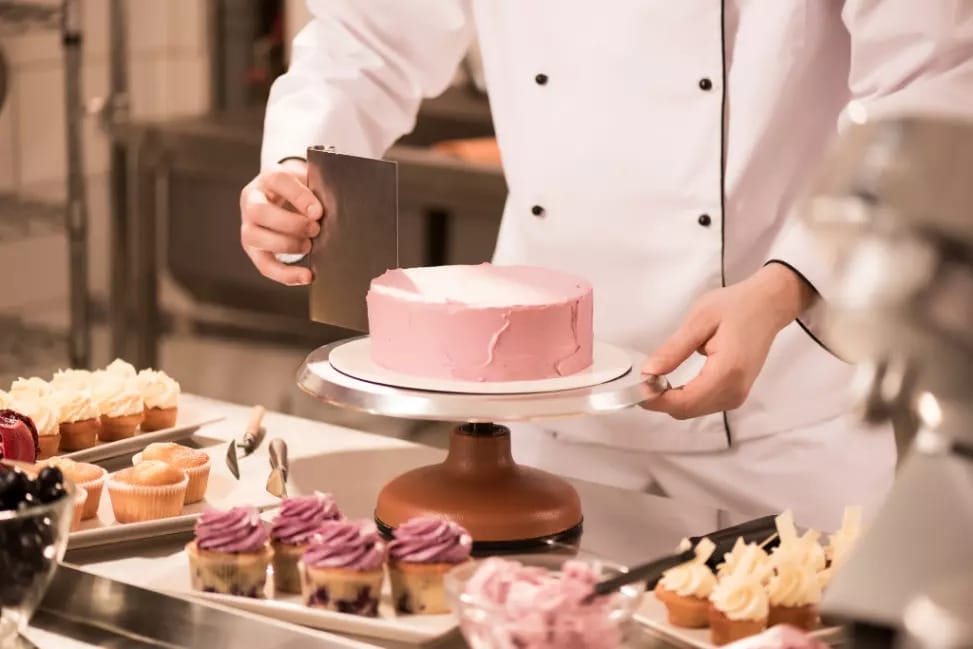
Before applying frosting to your cake, look for these signs that indicate it has cooled sufficiently:
Touch Test
Gently touch the top of the cake.
If it feels cool to the touch, it is likely ready for frosting.
Moisture Level
The surface of the cake should be dry, indicating that any residual heat or moisture has dissipated.
Stability
The cake should be firm and set, with no signs of jiggling or sagging in the center.
Tips for Ensuring Proper Cake Cooling
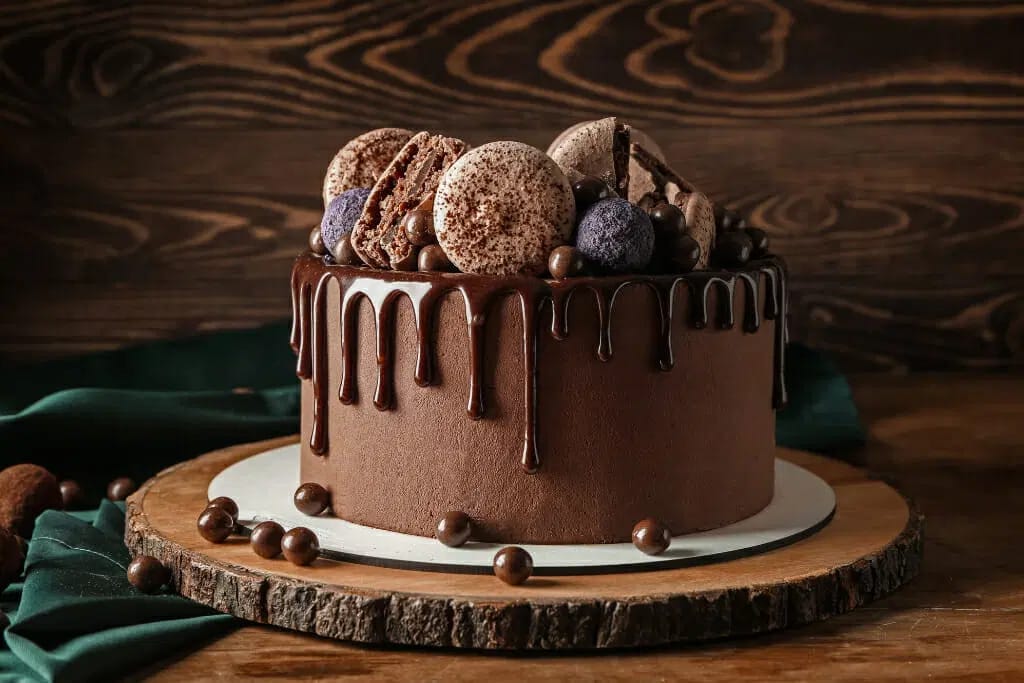
Follow these tips to ensure your cake cools properly.
Proper Pan Preparation and Removal
Grease and flour your cake pans before pouring the batter to prevent sticking.
Once the cake is baked, let it rest in the pan for a few minutes, then gently run a knife around the edges to loosen it before transferring it to a wire rack.
Cooling on a Wire Rack
Place the cake on a wire rack to cool.
This allows air to circulate around the cake, promoting even cooling and preventing the bottom from becoming soggy.
Avoid Drafts or Direct Heat Sources
Keep the cake away from drafts or direct heat sources, as these can affect the cooling process and potentially create uneven cooling.
Exceptions to the Cooling Time Rule
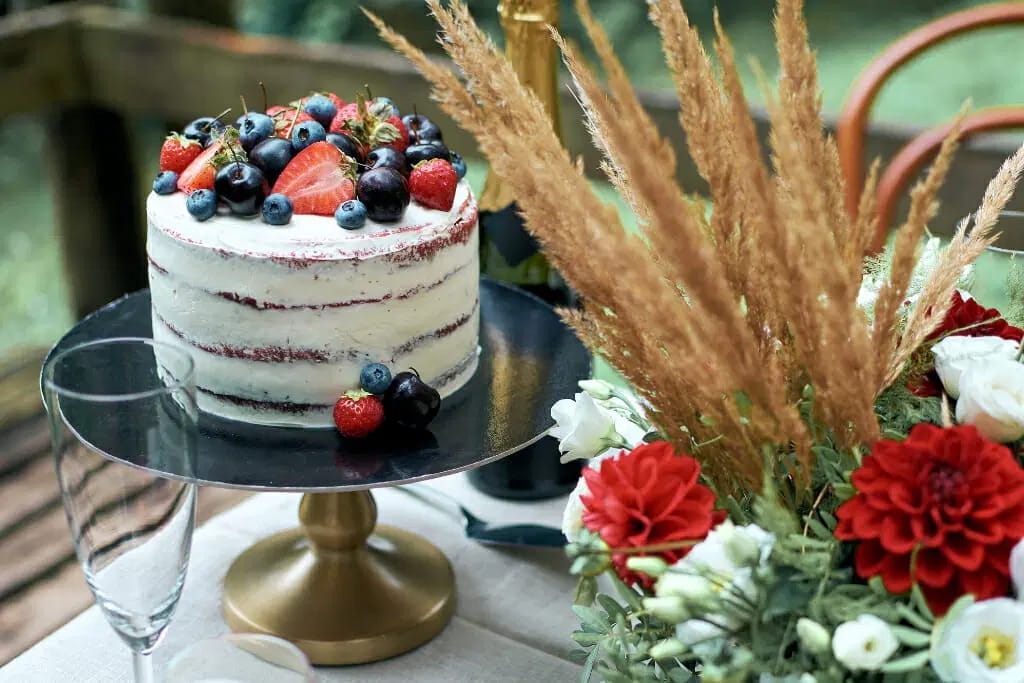
While proper cooling is generally recommended, there are a few exceptions to consider.
Crumb Coating Technique
If you’re using the crumb coating technique, where a thin layer of frosting is applied first, you can start frosting the cake while it’s still slightly warm.
This technique helps trap loose crumbs and creates a smoother final layer.
Chilled or Frozen Cakes
Some frosting techniques, such as creating intricate designs or working with whipped cream or delicate frostings, may require a chilled or partially frozen cake.
In these cases, you can frost the cake while it’s still cold.
Benefits of Correct Cake Cooling
Taking the time to cool your cake adequately before frosting offers several benefits.
Easier Frosting Application
A properly cooled cake provides a stable and solid surface for frosting, making it easier to achieve smooth and even results.
Improved Texture and Flavor
Allowing the cake to cool fully helps the flavors develop and ensures the desired texture, resulting in a more delicious and enjoyable eating experience.
Better Presentation and Stability:
A cooled cake provides a solid foundation for frosting, allowing you to create intricate designs, piped decorations, or other visually appealing elements.
It also ensures the stability of the cake, preventing frosting mishaps during transportation or serving.
Want more cake baking tips? Check these out!
